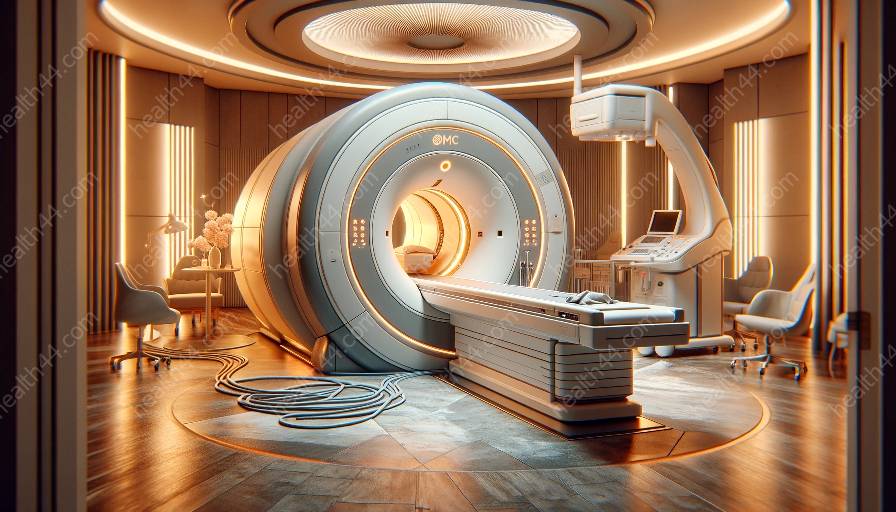Magnetic resonance imaging (MRI) is a powerful medical imaging technique that provides detailed images of the human body. This technology relies on the fundamental principles of nuclear magnetic resonance (NMR) and the interaction of magnetic fields with biological tissues. Understanding the physics of MRI is crucial to the operation and development of MRI machines and medical devices. In this article, we explore the fundamental physics of MRI and its compatibility with MRI machines and medical equipment.
Principles of Nuclear Magnetic Resonance
The basis of MRI lies in the principles of nuclear magnetic resonance (NMR), which is the process by which certain atomic nuclei absorb and re-emit electromagnetic radiation when placed in a magnetic field. In the context of MRI, hydrogen nuclei (protons) are the primary sources of the NMR signal due to their abundance in the human body and their high magnetic sensitivity.
When a patient is placed in the MRI machine, the hydrogen nuclei align themselves with the direction of the strong static magnetic field. Upon exposure to a radiofrequency pulse, the nuclei are temporarily perturbed and enter a higher energy state. As the nuclei return to their original alignment, they emit radiofrequency signals that are captured to create an MRI image.
Relaxation Processes and Image Formation
Two fundamental relaxation processes, known as T1 and T2 relaxation, play a crucial role in MRI image formation. T1 relaxation refers to the realignment of hydrogen nuclei with the static magnetic field, while T2 relaxation involves the dephasing of nuclear magnetization due to interactions with neighboring nuclei.
By manipulating the timing and strength of additional radiofrequency pulses, MRI machines can distinguish between different tissues based on their T1 and T2 relaxation times. This ability to differentiate between tissues with varying relaxation properties enables the creation of high-resolution anatomical images that aid medical professionals in diagnosis and treatment planning.
Compatibility with MRI Machines
The fundamental physics of MRI directly impacts the design and functionality of MRI machines. These machines consist of powerful magnets, gradient coils, radiofrequency coils, and sophisticated computer systems that work in tandem to produce high-quality images of the human body.
The static magnetic field, typically generated by superconducting magnets, is responsible for aligning the hydrogen nuclei within the patient's body. Gradient coils create spatial variations in the magnetic field, allowing for the localization of the NMR signal within the body. Radiofrequency coils transmit the radiofrequency pulses necessary to perturb the nuclear magnetization, and also receive the emitted signals for image reconstruction.
Understanding the physics of MRI is essential for engineers and technicians involved in the development and maintenance of MRI machines. By optimizing magnetic field strength, gradient performance, and radiofrequency pulse sequences, manufacturers can enhance image quality, reduce scan times, and improve patient comfort and safety.
Compatibility with Medical Devices and Equipment
When discussing the compatibility of MRI with medical devices and equipment, it's essential to consider the impact of strong magnetic fields on the functionality and safety of these devices. Many medical devices, such as pacemakers, cochlear implants, and metal implants, can be affected by the magnetic fields generated by an MRI machine.
Medical equipment and devices intended for use in the MRI environment must be specifically designed and tested for compatibility with the strong magnetic fields and radiofrequency energies present within the MRI suite. Furthermore, the potential for image artifacts and signal interference caused by the interaction between medical devices and the MRI environment must be carefully considered.
Manufacturers of medical devices and equipment must account for the fundamental physics of MRI when designing products that will be used in the vicinity of MRI machines. This often involves using non-ferromagnetic materials, shielding sensitive components, and implementing specialized designs to minimize the impact of the MRI environment on device functionality and patient safety.
Conclusion
The fundamental physics of MRI underpins the operation of MRI machines and their compatibility with medical devices and equipment. By understanding the principles of nuclear magnetic resonance, relaxation processes, and image formation, we can appreciate the intricate interplay between physics, technology, and healthcare in the realm of magnetic resonance imaging.


